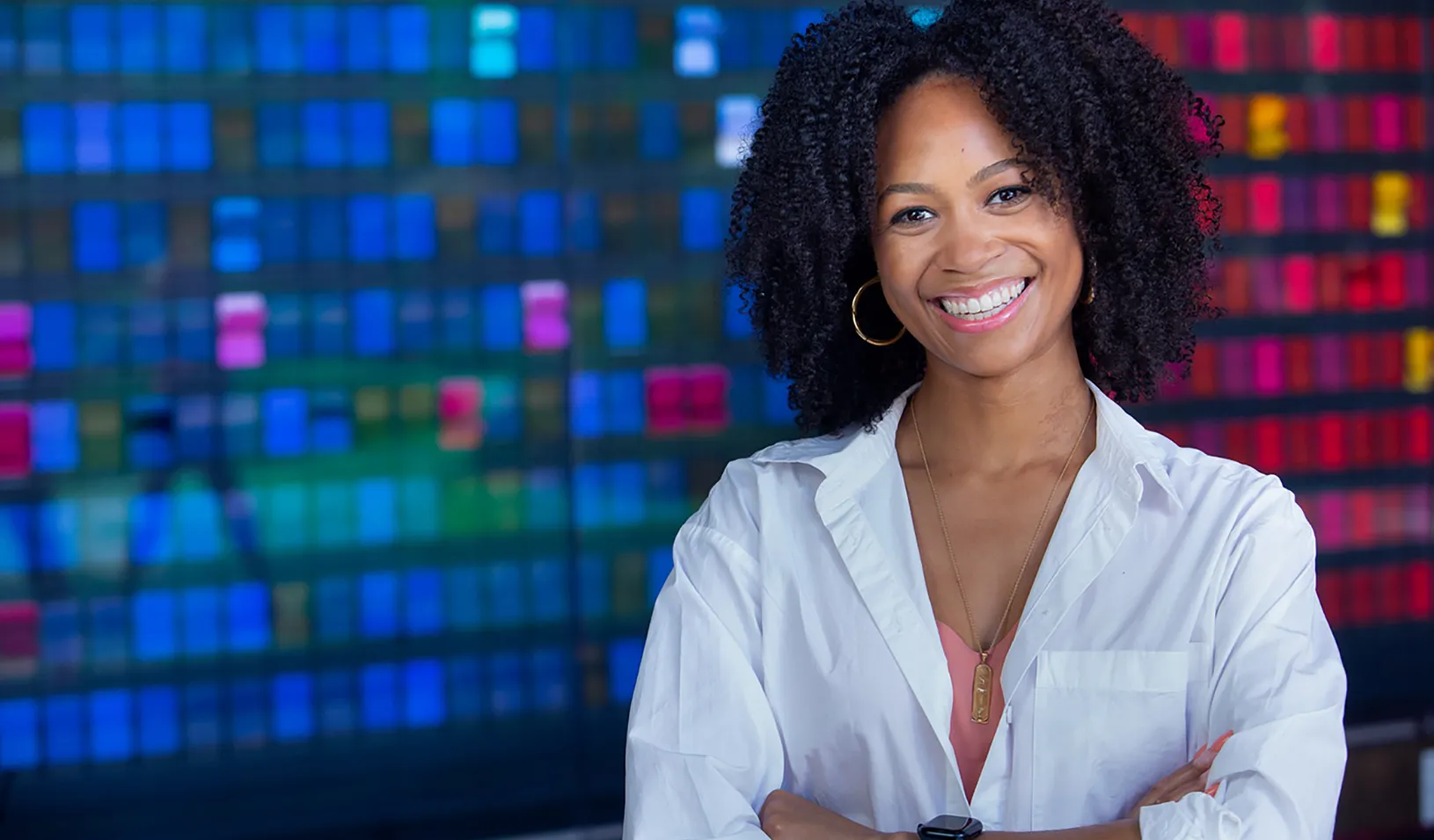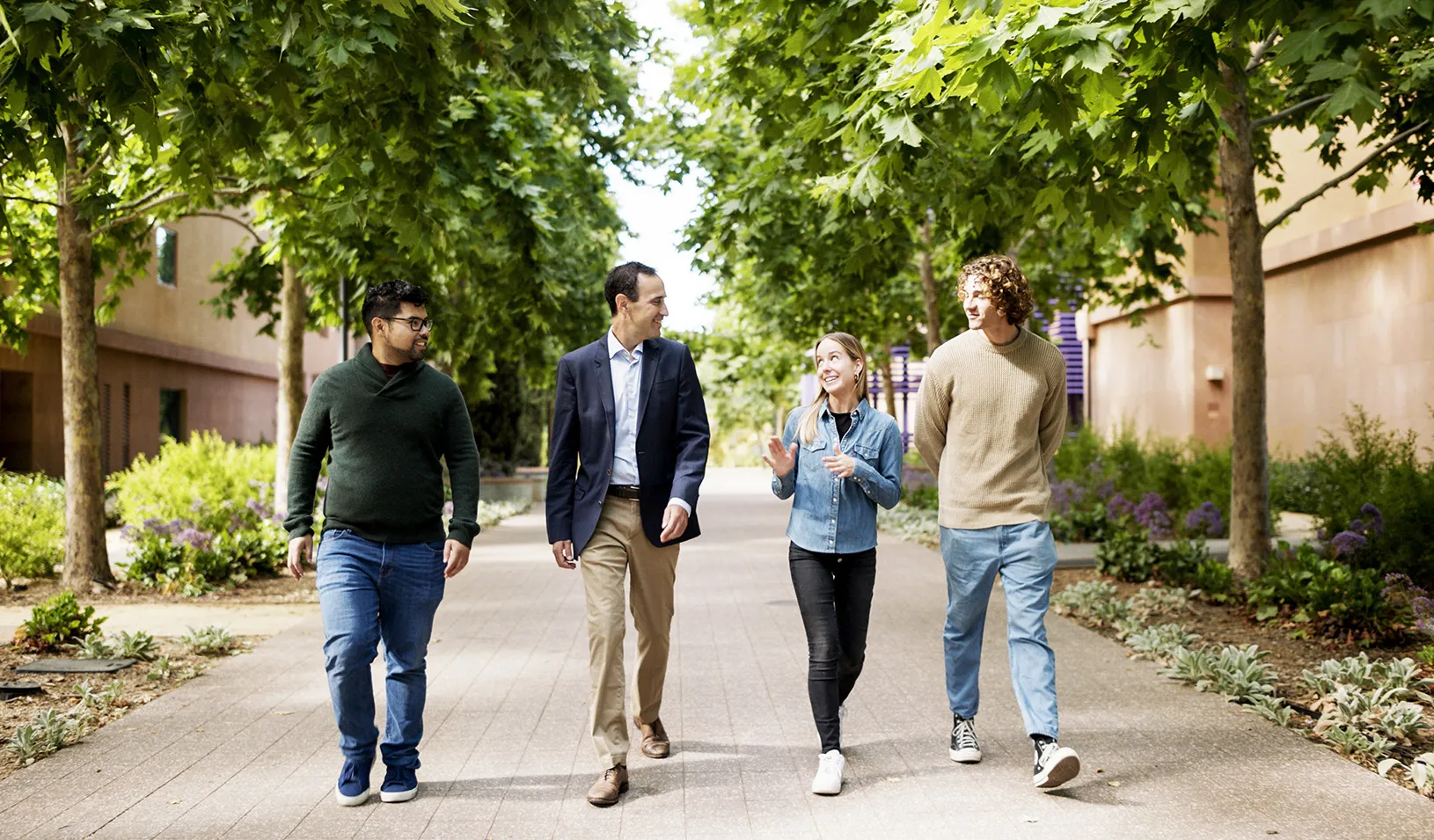For the Stanford Service Corps, Extreme Design Begins at Home
Before they travel to help poor people overseas, students in one of Stanford’s most sought-after courses apply their skills on campus.
July 01, 2020

Students put into practice the design thinking skills they learn in the Design for Extreme Affordability course. | Elena Zhukova
A team of four students huddles in the back corner of a large classroom divided into makeshift cubicles by tall whiteboards, all wallpapered in a rainbow of colors. Stephanie Ahn, MSx ’20, sits at a high-top worktable littered with construction paper, glue, and other assorted materials. These are the tools with which the students in the Design for Extreme Affordability course hope to improve the world.
The course (often affectionately shortened to Extreme) teaches students how to “design products and services that will change the lives of the world’s poorest citizens.” Past projects have included solar-powered refrigerators for families in Uganda, medical devices for children with cleft palates in Mexico, and a collapsible handwashing station for under-resourced schools in India.
The class is anything but an easy elective. Undergraduate and graduate students from a range of disciplines undergo a rigorous application process, and the 40 who are selected spend their winter and spring quarters pouring a tremendous amount of time into their projects — including in-depth research trips to the international partner social impact organizations where many of their resulting products or services are implemented.
But before starting their international projects, the students do a practice run in their own backyard in an early segment of the course called the Stanford Service Corps. Stuart Coulson, the Stanford GSB lecturer in management who leads the teaching team for the course, said that the students need a project that lets them test the design thinking skills they’ve been learning.
“We wanted something for them to cut their teeth on first, where the stakes are a bit lower and the target end user is more forgiving,” Coulson said.
Students are divided into teams of four and paired with one of the campus’s many service departments — such as residential and dining enterprises, recreation and wellness, or transportation — with the goal of gaining insight into an existing problem.
A Student-Staff Collaboration
By bringing together students and campus staff, the projects connect groups of people who typically do not cross paths. Campus staff, Coulson said, “manage the environment around students, but they rarely get to be with or talk to the students.” This is an unfortunate reality that Extreme aims to change. “The students gain a better appreciation for how the campus works and who makes that happen,” he said, “while the campus staff get to join the students in their design and innovation learning.”
Even though the partnership was originally intended to be just a learning exercise, the collaboration has had tangible impact on campus life. “We’ve been quite surprised by the fact that when we go back to those partners, they say, ‘Oh yeah, we implemented those suggestions you made last year,’” Coulson said. “And we’re like, ‘Wait a minute! That was just a practice project.’”
In early January, Ahn and her three teammates were paired with Stanford Transportation. They prepped for their initial meeting in a glass-walled d.school conference room. The four students brought very different perspectives to the table: Ahn has a background in public health; Beverley See, E-IPER/MBA ’21, previously worked as a venture capitalist; Robert Kasse is a fifth-year PhD student in materials science and engineering studying batteries; and Sara Berg-Love is a second-year master’s student in mechanical engineering.
None of them knew much about public transit, but they knew the diversity of their backgrounds would be an asset in the project. “The interdisciplinary aspect of this class really works,” See said.
Their task? Improving the experience of riders who pass through the Palo Alto Transit Center — the commuter train station and bus depot on the edge of the Stanford campus that has struggled to accommodate an ever-increasing number of public transit commuters.
With Caltrain planning on going electric and thus increasing its service to the station within the next few years, the transportation team is trying to figure out how to handle even more train riders at the congested hub. In addition, several bus service providers, including Stanford Marguerite shuttles, the Valley Transportation Authority, and SamTrans, serve the transit center, as well as rideshare services like Uber and Lyft.
Empathy and Observation
Once the transportation staff arrived at the meeting, they fielded rapid-fire questions from the students about everything from scheduling to communication between bus drivers to wayfinding within the station. First and foremost, the students learned that there are too many buses from too many transit agencies trying to load during peak hours, and there simply isn’t room to accommodate more.
The possibility for physical modifications of the space is limited, the students learned, because many of the adjacent buildings are historical landmarks. Several different agencies have jurisdiction over the station, so any changes can be costly and time-consuming, requiring approval from many stakeholders. An increased reliance on rideshare services like Uber and Lyft adds to the congestion.
After the initial meeting, the students began a two-week sprint in which they practiced their observation and empathy skills by shadowing the morning platform supervisor at the Palo Alto Transit Center, speaking to commuters, and trying to understand what the pain points were for everyone involved. Some passengers knew exactly where to go, while others needed more help. The students watched one man miss his bus because he waited in the wrong place for several minutes.
The early stages of any design thinking project are highly human-centered and require a lot of empathic perspective-taking. For the Stanford GSB students, it was a definitive shift from a more systems-based approach.
Embracing Chaos
“It’s a very unintuitive process from the business school perspective,” said Ahn.
“In the business school,” said See, “it’s about making everything more efficient, whereas this was about embracing chaos.”
On the morning of February 3, in a large d.school classroom, the students’ final presentation to the Stanford Transportation team began with a skit. Kasse narrated Ahn’s journey as she stepped out from behind two screens and role-played a first-time Marguerite passenger. Berg-Love acted as an employee of a startup trying to get to a meeting in downtown Palo Alto.
The team imagined different use cases for the station and tried to address a diverse array of needs. Their detailed observations had helped them pinpoint locations for wayfinding aids — signage that clarified which bus lines loaded where and which designated areas rideshare drivers could use for loading.
The students also proposed changing some of the bus routes from various agencies so they didn’t all stage at the transit center. “For a lot of commuters, their final destination is on campus,” See noted, suggesting that perhaps not all the buses need to stop at the station. “When we spoke to VTA, they seemed open to changing the routes.”
‘You Guys Are Right on the Mark’
In part to address this obstacle, the students recommended increased communication between the transit agencies involved. It took a lot of untangling to understand the relationships among the different stakeholders, and it eventually became clear that not all of them were speaking a common language. “We talked to people from all these different organizations, and they seemed to agree with each other, but they didn’t know they agreed with each other,” Kasse said.
The students proposed organizing monthly coordination meetings between the various agencies to discuss the operations of the transit center and provided the Stanford Transportation team with a sample agenda for a first meeting.
The Stanford Transportation staff applauded the students’ attention to detail throughout the process and noted that some of their suggested solutions are already in the works. “You guys are right on the mark,” said Danny Finale, the department’s operations supervisor.
After everyone else had left, Ahn, See, Berg-Love, and Kasse dismantled their tall poster board. The course moves quickly, so they had very little time before they would be assigned their final international projects. Even so, Berg-Love wished they had two more weeks to devote to the transportation project: “We would’ve liked to talk to someone from the city of Palo Alto, talk to bus drivers, and do more of everything, basically.”
The team agreed that the Stanford Service Corps exercise had been a good way to apply what they’d learned in Extreme and an opportunity to better understand a campus partner. “I have a deeper appreciation for how complex the transportation system is,” Ahn said. “There’s already so much thought and work being done to make commuting so seamless. It’s greatly appreciated.”
Kasse agreed and said with a laugh, “I’ll never look at a bus the same way again.”
The Stanford Service Corps project described in this article occurred pre-pandemic; some approaches to international projects this year had to adapt in light of COVID-19 constraints, but the course was able to continue successfully.
— Jenna Garden
For media inquiries, visit the Newsroom.
Explore More
Erin Nixon Joins Stanford GSB as Assistant Dean of Admissions

Nia Rose Froome, MBA ’23: Making Local, Fresh Food Available for All

New Research Fund Promotes Responsible Leadership for the Next Century
